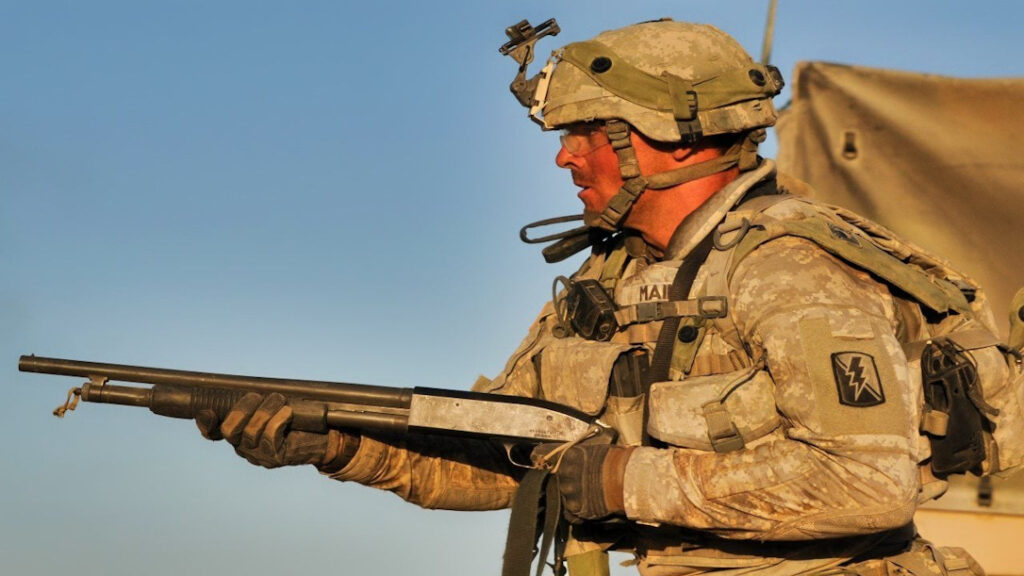During the era of full-caliber military battle rifles, no other standard-issue military rifle had iron sights like the M1 Garand. Even though the M1 Garand’s primary purpose was to serve as an infantryman’s rifle with a real-world 3-6 MOA accuracy potential, its sights were still fully adjustable, more precise than they needed to be and maybe even overbuilt. That’s why I think they’re so wonderful.
Considering the M1’s overall build quality, smoothness, semi-automatic action, and relatively comfortable furniture, I already consider it the Cadillac of World War II rifles. Then factor in its sights and their functionality, and they’re easily the cherry on top. The entire rear sight assembly is fully adjustable for both windage and elevation, while the front blade can also be drifted laterally for windage. This allows any rifleman to precisely adjust their rifle’s mechanical zero with a given load.
Considering how imprecise military weapons are, I’ve always found the M1’s sights fascinating. Are they perhaps a little over the top on a standard military rifle? Probably. But this is America and we’re dealing with one of the most American rifles ever to be fielded. In America, we do things because we can.
Advertisement — Continue Reading Below
When I was younger, I also learned the basis of centerfire rifle shooting on my old WWII-era M1 Garand—which could be a story unto itself. It certainly ties into my fondness for the M1’s sights, too.
In practice, it’s no different than zeroing a riflescope to a particular rifle and cartridge and then locking the turrets to their zero setting after that initial adjustment.
M1 Garand Background
The M1 Garand was designed by John Cantius Garand, a French-Canadian engineer who worked at the Springfield Armory arsenal. The M1 Garand’s semi-automatic action uses a long-stroke piston mechanism and holds 8 .30-06 cartridges that are loaded with en-bloc clips into its internal magazine. After cycling the 8th round, the rifle also ejects the empty en-bloc clip, famously making that distinctive pinging sound that has become a meme unto itself.
Advertisement — Continue Reading Below
Garand’s prototype for a semi-automatic military rifle was based on an earlier semi-automatic French design, the Mlle. 1917. If Mr. Garand and his team had their way, the M1 rifle would have held ten rounds of the sleeker, shorter, and more efficient .276 Pedersen (7x51mm) experimental rifle cartridge (.277 Fury vs 7.62mm NATO anyone?).
Instead of a 7mm bore rifle, the conservative-minded powers stipulated that the M1 Garand remain chambered for the .30-06 cartridge, which was flush in the government’s inventory.
The Sighting System
The M1 Garand’s front and rear sights consist of a rear aperture and a guarded front blade. The rear sight is guarded by pair of distinctive circular knobs on either side that turn to adjust the rear sight’s windage and elevation adjustments. These knobs have a click value of 1 MOA per click, fairly precise for an infantry rifle of the era.
Advertisement — Continue Reading Below
The front blade is also protected by a pair of ears that curve out, and the entire assembly slides laterally on a dovetail across the front sight base, which is part of the rifle’s gas tube. The front sight itself is secured by a 3/16″ Allen screw. On the rear, the receiver itself even has etched-in hashmarks to measure windage movement against the rear sight assembly.
The M1’s sight picture itself is easily recognizable; it’s practically the same sight picture of any standard iron-sighted AR-15 pattern firearm. Once properly zeroed and adjusted, M1 Garand sights are very intuitive to use. The shooter simply looks through the rear aperture and their brain and eyes seemingly center the front sight itself through the aperture.
As long as the sights are properly zeroed and the shooter knows how many clicks to dial for their distance, one physically doesn’t need to do much besides center the front sight in the middle of the aperture. This is what makes this sight picture so wonderful and superior to most others. It’s worth pointing out that classic AR-15 pattern iron sights borrow their sight picture from the M1, too.
Advertisement — Continue Reading Below
Sight Adjustments
The real magic in these military rifle sights comes from how adjustable they are. Besides the rear windage and elevation knobs’ click value of 1 MOA, the fact that the front sight itself slides on a separate dovetail gives the rifleman a more refined chance to zero their specific Garand to the load they’re shooting.
The idea behind the front sight sliding on the dovetail is to establish a perfect mechanical zero while leaving the rear sight’s own windage properly centered. This allows the shooter to dial for windage and elevation with their rear sight only while ensuring that the rifle itself is properly indexed and zeroed. In practice, it’s no different than zeroing a riflescope to a particular rifle and cartridge and then locking the turrets to their zero setting after that initial adjustment.
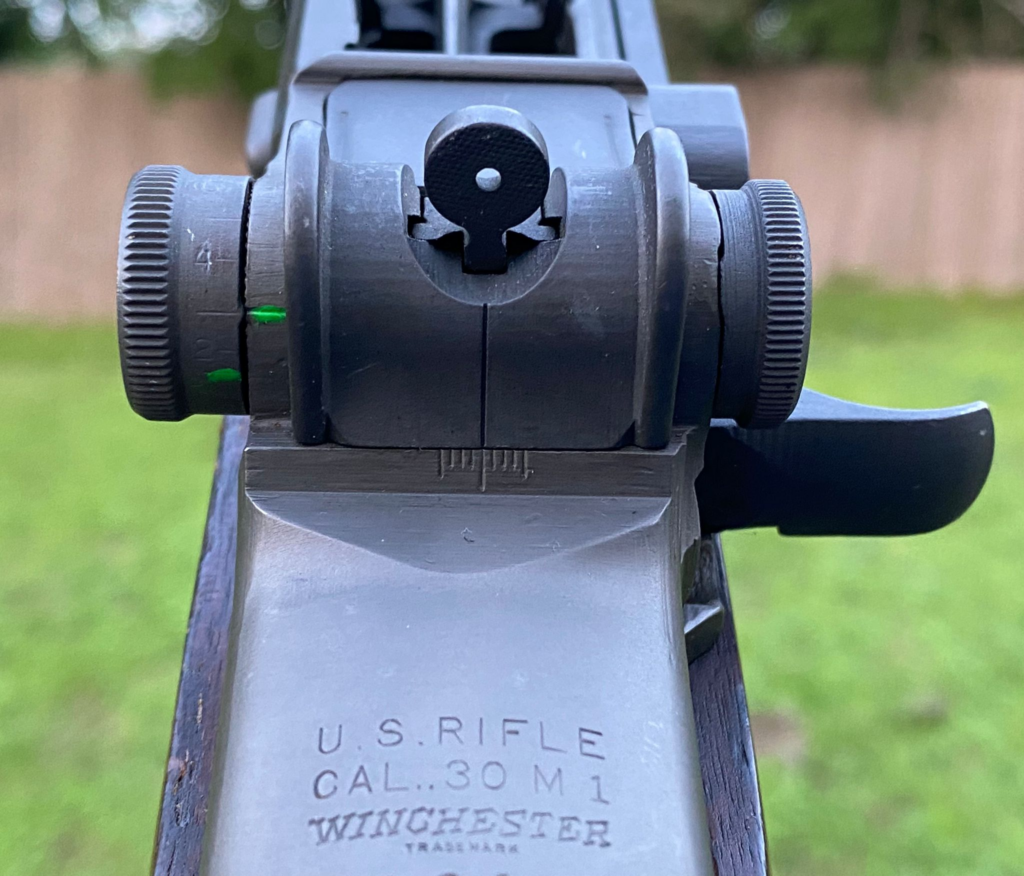
Advertisement — Continue Reading Below
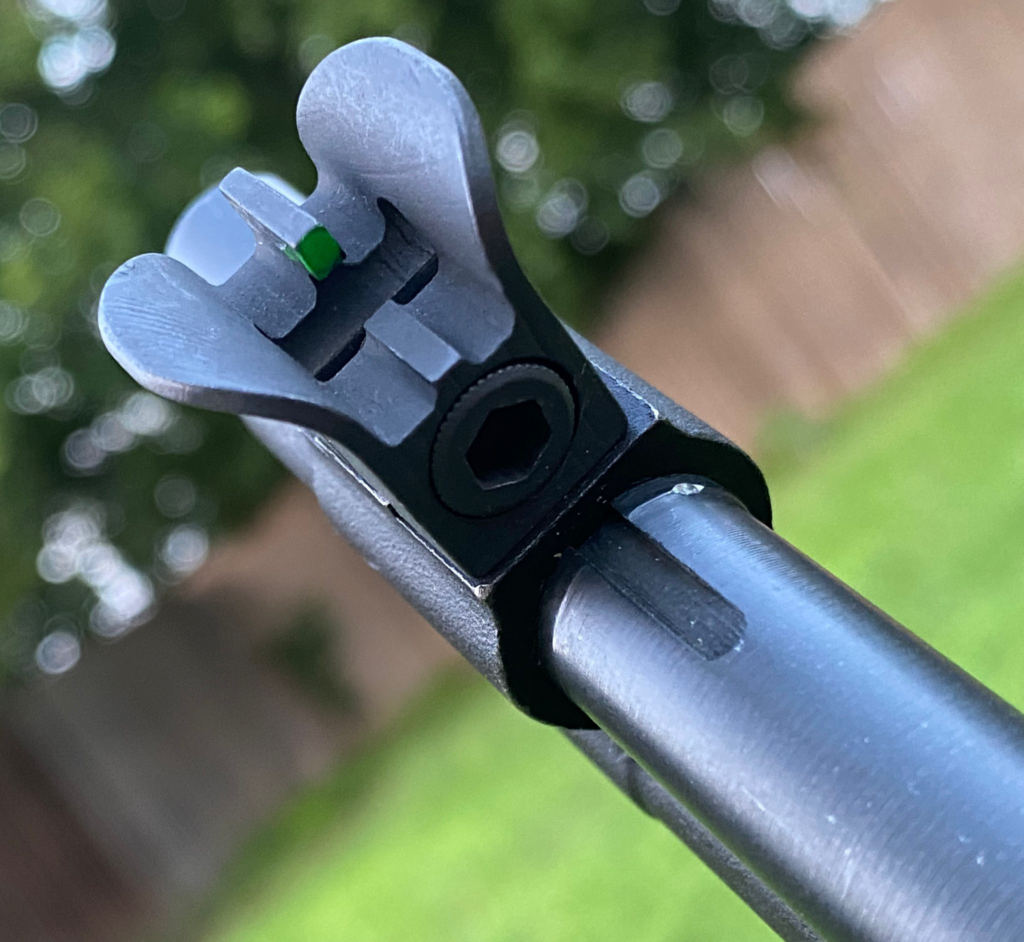
Zeroing the Sights
With my old WW2 Springfield M1 Garand, I learned to do this by shooting a satisfactory group (I recommend at least ten rounds) at 100 yards at a standard target, like an SR-1, which corresponds to the standard .075-inch front blade width. The standard 200-yard SR target would also work fine for a 200-yard zero. The zeroing target needs to be large enough to consistently index the front sight and have a way to easily measure vertical and lateral impacts.
Besides a smart target, having a pair of calipers on hand is also a good idea. Ideally, zeroing takes place on a calm day without wind, and prior to shooting the initial group, all of the rifle’s sights should be physically centered. The rear sight assembly needs to line up with the central hashmark, and the front sight should be centered on its dovetail.
Advertisement — Continue Reading Below
Unfortunately, the gas blocks don’t have index marks, but one can use calipers to measure the exact width and then mark dead center behind the muzzle, underneath the Allen screw. After centering the entire system, the elevation knob is turned all the way to dead bottom and then adjusted 6-8 clicks (depending on who you ask for 100 yards). The US Army used to instruct soldiers to come up ten clicks for a 200-yard zero. After doing this and shooting that very slow, careful, and deliberate perfect 10-shot group, one can take their target and adjust accordingly.
Using Calipers
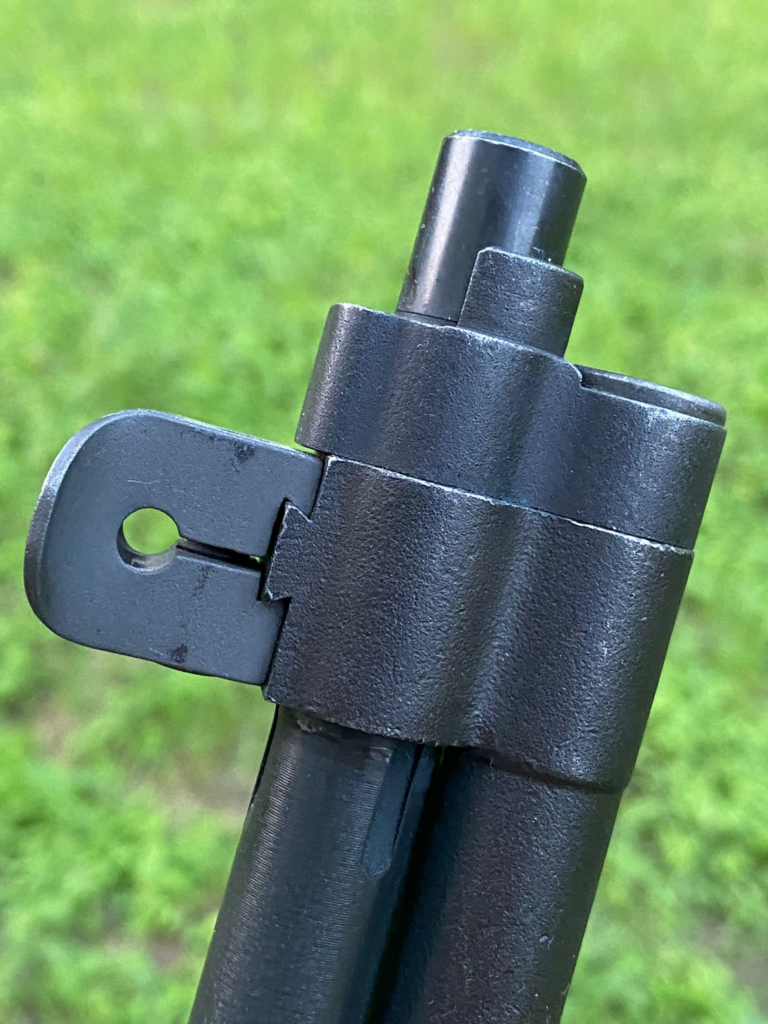
Here’s where the calipers come in very handy. For example, suppose the mean-radius of the group was 1-inch to the right from the point of aim on the target. To fix this, one would take their calipers, measure .008 inches to the right of the original index mark, make a new marking, and then carefully drift the front sight to line up with the new marking.
Advertisement — Continue Reading Below
One would do the same thing for the vertical adjustment, take a measurement with calipers between the mean radius and original point of aim or desired point of impact and then use the left-side knob to dial the appropriate distance.
It’s important to keep in mind how many clicks from dead bottom one started shooting at, be it 8, 10, or 12 clicks. With that number in mind, keep track of how many additional clicks it took to get the elevation lined up correctly and add those two numbers.
For example, on my old Garand using Greek HXP M2 Surplus 30-06 at 100 yards, that number was seventeen clicks from base. With my front sight physically drifted in place, I knew I could always reset to my mechanical zero with the rear sight by centering the sight and clicking up seventeen times from dead bottom. If I needed to dial for more elevation, I would work off this number. Understanding total clicks from base for your load is crucial and worth writing down.
Advertisement — Continue Reading Below
Guidelines for a Battlesight Zero
I know that everything I just described would be more pertinent to any target or precision rifle. The US Military was also aware of this and also had guidelines for a battlesight zero with an elevation of 1.82 inches above the point of aim at 25 meters. This zero would cover the M1 Garand’s maximum point-blank range out to 250 meters. It’s not too different than the AR-15’s 50/200m zero or the like.
The Takeaway
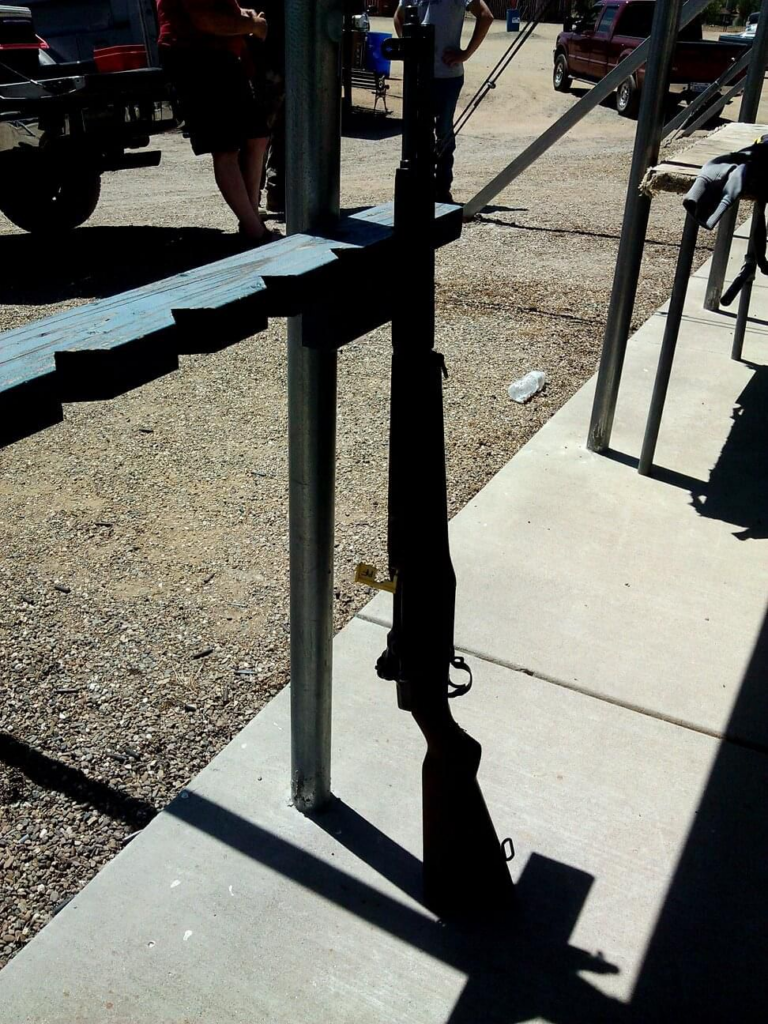
Americans love this rifle for many reasons. These days, M1 Garands are loved and revered as symbols of American military prestige and our country’s triumph over the Axis powers during the Second World War. In the middle of the war, General George S. Patton called it “the greatest battle implement ever devised.”
Compared to the rifles that both America’s peers and enemies fielded during the conflict, the M1 was arguably superior. It wasn’t just that it held a few extra cartridges compared to other full-size rifles and had a quick-cycling semi-automatic action, but it also had those superlative sights.
Even compared to other rifles that had more mechanical accuracy, such as the Swiss K-31, Swedish M96, Finnish Mosins, etc., the M1 standard sights still had a higher degree of sophistication.
Standing the Test of Time
Except for perhaps No.4 Lee-Enfields, Eddystone M1917s, Springfield 1903-A3 rifles, and M1 Carbines, most other rifles of the era had the more archaic post-and-tangent sight arrangement. But even this group of Allied rifles with rear peep-sights didn’t have sighting systems as user friendly as the M1 Garand did.
Tangent sights altogether are generally slower and require more care to properly align. Besides that, most tangent sights are mounted forward of a rifle’s receiver, which lengthens the sight radius, which affects a rifle’s degree of precision. Even during the Cold War, the M1 Garand’s sights still bested the sights found on most western 7.62mm NATO infantry rifles, as these weren’t as sophisticated.
The M14 is the sole glaring exception, as that rifle uses the exact same style of iron sights. Frankly, military battle rifles probably don’t need this level of adjustability anyway. But again, we’re talking about America’s rifle here. From the Cold War on, perhaps the M16-A2 sights would be the runner-up to the M1’s as these could be nearly as adjustable.
They always say that American military rifles, as a whole, tend to resemble target rifles more than anything, and maybe it’s true. We love having it our way in the United States.
Further Reading
Not related to the M1’s sights, but a fun read about post-war M1 Garands made by IHC.
An in-depth look at the M1’s rear sight assembly.


